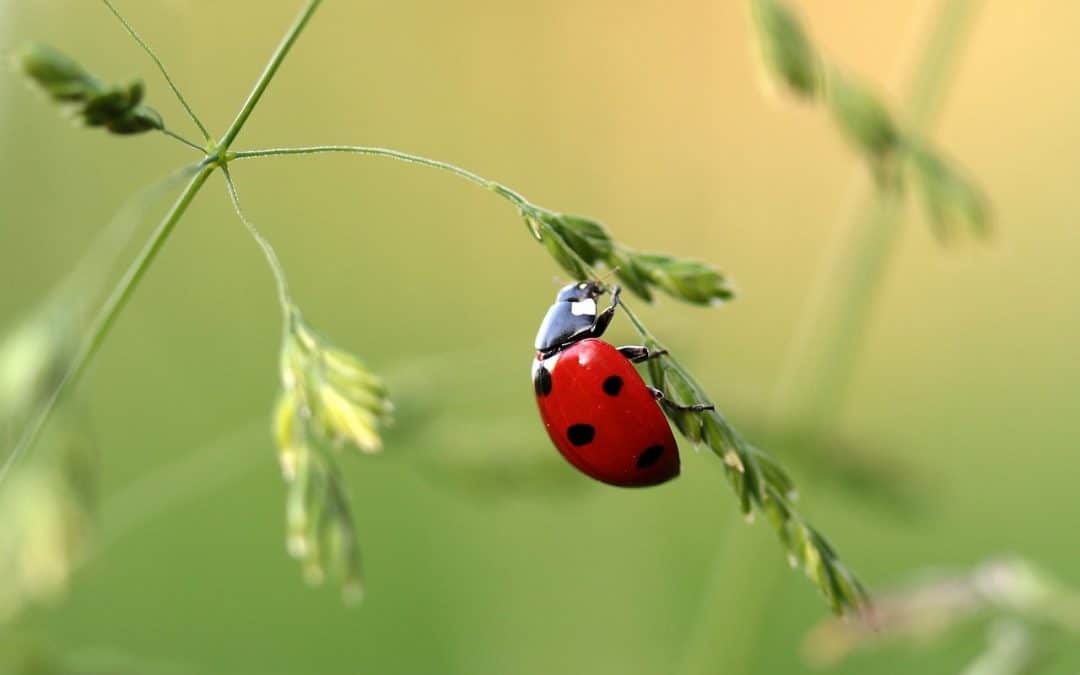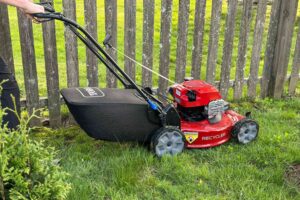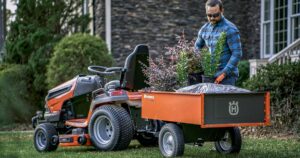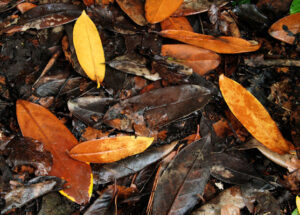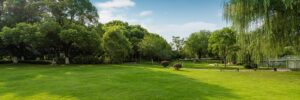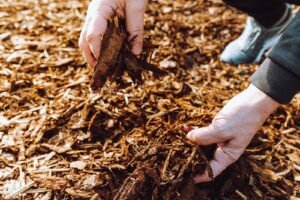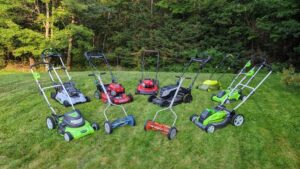Beneficial Insects for Your Lawn and Garden: Nature’s First Line of Defense
Have you ever stood in your garden, dismayed at the sight of aphids clustering on your roses or caterpillars munching through your vegetable patch? Before reaching for chemical pesticides, consider this: your yard is potentially home to an army of beneficial insects ready to solve these problems naturally. These six-legged allies can transform your approach to gardening, eliminating the need for harsh chemicals while promoting a thriving ecosystem right in your backyard.
According to the USDA Natural Resources Conservation Service, beneficial insects provide essential ecosystem services valued at $57 billion annually in the United States alone. These services include pest control, pollination, and soil improvement—all critical components of successful gardening and landscaping.
In this comprehensive guide, you’ll discover which beneficial insects deserve your protection, how to attract them to your outdoor spaces, and practical ways to create a balanced ecosystem where these helpful creatures can thrive. By understanding the role of beneficial insects, you’ll be taking a significant step toward sustainable gardening practices that benefit both your plants and the planet.
Understanding the Role of Beneficial Insects in Your Garden
Beneficial insects serve multiple crucial functions in your garden ecosystem. Unlike pest insects that damage plants, beneficial insects work in harmony with your gardening goals by controlling pest populations, pollinating flowers, and improving soil quality.
The Three Categories of Beneficial Insects
Beneficial insects generally fall into three main categories:
Predators: These insects actively hunt and consume garden pests. Lady beetles (ladybugs), praying mantises, and assassin bugs are excellent examples of predatory beneficial insects that feed on aphids, mealybugs, and other troublesome pests.
Parasitoids: Perhaps less visible but equally important, parasitoid insects lay their eggs on or inside pest insects. When the eggs hatch, the larvae consume the host pest from the inside out. Parasitic wasps are among the most effective parasitoids, controlling populations of caterpillars, aphids, and whiteflies without harming plants.
Pollinators: These insects transfer pollen between flowers, enabling plants to produce fruits and seeds. Bees are the most recognized pollinators, but butterflies, certain flies, and beetles also contribute significantly to this essential process.
The Economic Value of Beneficial Insects
The contributions of beneficial insects extend far beyond your personal garden space. The Environmental Protection Agency estimates that insect pollinators contribute more than $15 billion to U.S. crop values annually. Meanwhile, predatory insects save billions more by reducing the need for chemical pesticides and preventing crop losses.
When you protect and encourage beneficial insects in your yard, you’re participating in a wider ecological solution that has significant economic implications. As climate change and habitat loss continue to threaten insect populations worldwide, your garden can become a crucial sanctuary for these important species.
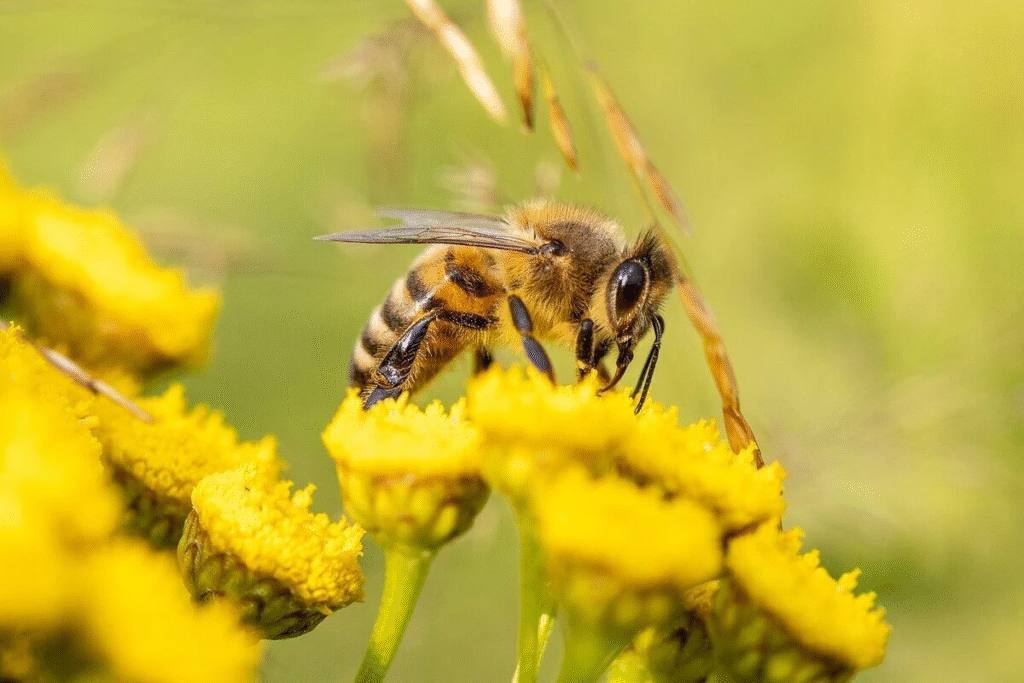
Top Beneficial Insects for Your Garden and How to Attract Them
Let’s explore some of the most effective beneficial insects that can transform your gardening experience, along with specific strategies to attract each type to your outdoor spaces.
Lady Beetles (Ladybugs)
Lady beetles are perhaps the most recognizable beneficial insects, with their distinctive spotted backs and vibrant colors. A single adult lady beetle can consume up to 5,000 aphids during its lifetime, making these insects incredibly effective natural pest controllers.
How to Attract Lady Beetles:
- Plant dill, fennel, cilantro, and yarrow, which provide both habitat and alternative food sources.
- Create areas with shallow water for drinking.
- Avoid broad-spectrum insecticides that kill beneficial insects along with pests.
- Consider purchasing lady beetles from garden centers for quick population establishment, but do so with caution—many purchased lady beetles fly away soon after release.
Praying Mantises
These charismatic predators are fascinating to watch and helpful in controlling various garden pests. With their distinctive prayer-like stance and remarkable hunting abilities, praying mantises consume flies, moths, and even small rodents.
How to Attract Praying Mantises:
- Create structural diversity in your garden with tall grasses and shrubs.
- Avoid excessive garden cleanup in fall, as mantises lay egg cases on plant stems.
- Plant roses and raspberries, which mantises often favor for egg-laying sites.
- Provide water sources in your garden with stones for easy access.
Lacewings
Green lacewings are voracious predators, particularly in their larval stage when they’re known as “aphid lions.” A single lacewing larva can consume up to 200 aphids per week, along with mealybugs, spider mites, and small caterpillars.
How to Attract Lacewings:
- Plant angelica, coreopsis, and cosmos, which produce the pollen and nectar adult lacewings need.
- Establish areas with dew-collecting plants where lacewings can drink.
- Provide overwintering sites like leaf litter or brush piles.
- Install yellow light bulbs near garden areas, as lacewings are attracted to this color at night.
Ground Beetles
These nocturnal hunters patrol the soil surface, consuming slugs, snails, cutworms, and other ground-dwelling pests. With over 2,500 species in North America alone, ground beetles are diverse and abundant allies in pest management.
How to Attract Ground Beetles:
- Create permanent pathways between garden beds with mulch or stones.
- Leave areas of your yard unmowed and slightly wild.
- Avoid tilling soil frequently, as this disrupts beetle habitat.
- Use perennial ground covers in unused garden areas.
Hoverflies (Syrphid Flies)
Often mistaken for bees due to their similar coloring, hoverflies serve dual beneficial roles. The adults are excellent pollinators, while their larvae voraciously consume aphids—up to 400 during their development.
How to Attract Hoverflies:
- Plant sweet alyssum, phacelia, and calendula, which provide accessible nectar.
- Establish shallow water features with landing stones.
- Include plants with umbrella-shaped flowers like dill and fennel.
- Leave some aphid populations intact initially to attract hoverflies looking for egg-laying sites.
Parasitic Wasps
Don’t let the word “wasp” alarm you—these tiny, non-stinging insects are powerful allies in pest control. Various species target specific pests, including tomato hornworms, cabbage worms, and aphids.
How to Attract Parasitic Wasps:
- Plant members of the carrot family (Apiaceae) like dill, fennel, and Queen Anne’s lace.
- Include small-flowered plants like sweet alyssum and yarrow.
- Provide water sources with landing areas.
- Establish perennial flowering plants that bloom throughout the growing season.
Butterflies and Moths
While we typically value butterflies for their beauty, both butterflies and moths serve as important pollinators in the garden ecosystem. Different species are active at different times of day, ensuring continuous pollination services.
How to Attract Butterflies and Moths:
- Plant native flowering species that provide nectar through the season.
- Include host plants for caterpillars, such as milkweed for monarchs.
- Create puddling areas with damp sand and dissolved minerals.
- Limit artificial lighting that can disrupt moth behavior.
Comparison of Top Beneficial Insects and Their Impact
| Beneficial Insect | Primary Prey/Function | Consumption Rate | Best Attraction Method | Overwintering Needs |
|---|---|---|---|---|
| Lady Beetles | Aphids, mealybugs, scale insects | Up to 50-60 aphids per day | Herb gardens with dill and fennel | Protected areas with leaf litter |
| Green Lacewings | Aphids, mites, small caterpillars | 200+ aphids per week (larvae) | Angelica, cosmos, dandelions | Brush piles, loose mulch |
| Ground Beetles | Slugs, snails, cutworms | Varies by species | Permanent mulched pathways | Undisturbed soil, log piles |
| Praying Mantises | Various insects, including pests and beneficials | 2-3 insect prey items daily | Tall ornamental grasses, shrubs | Egg cases on plant stems |
| Hoverflies | Aphids (larvae), pollination (adults) | 400+ aphids during larval stage | Sweet alyssum, phacelia | Various, depending on species |
| Parasitic Wasps | Host-specific: aphids, caterpillars, etc. | Up to 100 hosts per female | Umbrella-shaped flowers like dill | Protected soil, plant debris |
| Native Bees | Pollination | Can visit 5,000+ flowers daily | Native wildflowers, bee houses | Soil burrows, hollow stems |
Creating a Beneficial Insect Habitat in Your Yard
Attracting beneficial insects isn’t just about planting the right flowers—it’s about creating a complete habitat that meets their needs throughout their life cycles. Here are comprehensive strategies to transform your yard into a beneficial insect haven.
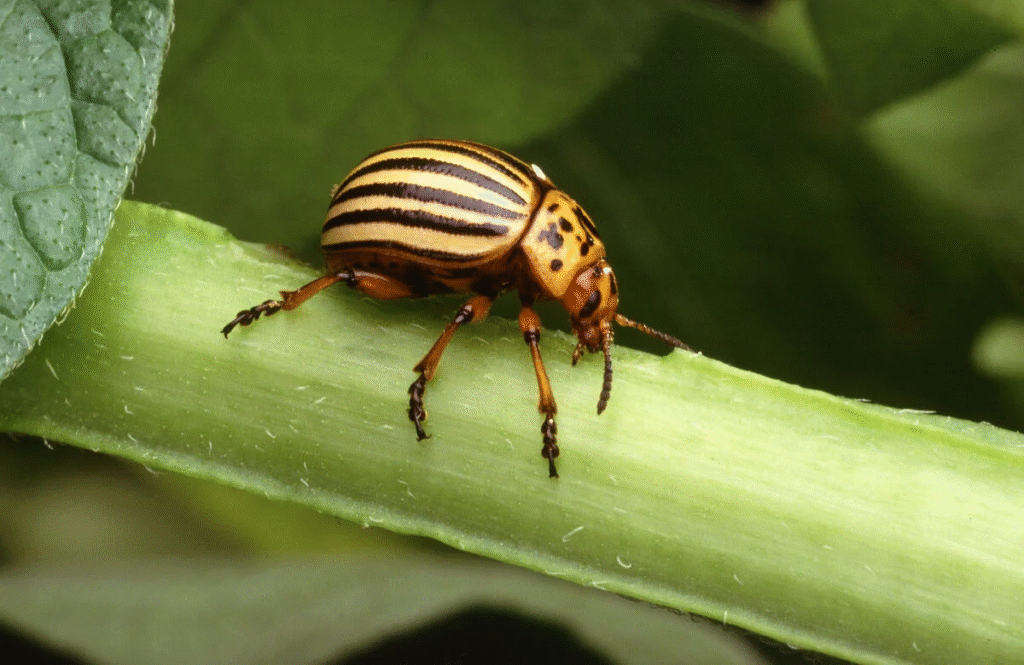
Diverse Planting Strategies
The foundation of any beneficial insect habitat is plant diversity. Different insects require different plant species for food, shelter, and reproduction. Consider implementing these planting strategies:
Create Insectary Strips: Dedicate rows or patches specifically to plants that attract beneficial insects. Position these strips every 20-25 feet throughout your garden to ensure beneficials can easily reach all areas.
Establish Flowering Succession: Plan your garden to have something blooming from early spring through late fall. Early-season bloomers like crocus and hyacinth support beneficial insects emerging from winter dormancy, while late-season flowers like asters and goldenrod provide critical pre-winter nutrition.
Include Native Plants: The USDA’s Natural Resources Conservation Service recommends incorporating native plants whenever possible, as these have co-evolved with local beneficial insect populations. According to their research, native plants can support up to 4 times as many beneficial insect species as non-natives. Find native plant recommendations for your specific region at USDA PLANTS Database.
Plant in Clusters: Group compatible plants in clusters of at least 3-5 specimens. This concentration of resources makes it easier for beneficial insects to locate food sources and establish populations.
Water and Shelter Requirements
Beyond food sources, beneficial insects need water and shelter to thrive in your garden.
Water Features: Create shallow water sources with landing zones—pebbles or small sticks emerging from the water surface provide safe drinking spots. Replace water regularly to prevent mosquito breeding.
Overwintering Sites: Many beneficial insects need protected areas to survive winter. Leave some areas of your garden unmaintained through winter, with leaf litter, hollow stems, and brush piles to serve as hibernation sites.
Insect Hotels: Consider building or purchasing insect hotels—structures with various-sized tubes, holes, and chambers that provide nesting sites for solitary bees, lacewings, and other beneficial insects.
Ground Habitat: Maintain some bare soil patches for ground-nesting bees, and use mulch pathways for ground beetles.
Reducing Pesticide Impact
Even organic pesticides can harm beneficial insects if used improperly. Follow these guidelines to minimize impact:
Practice Targeted Treatment: Treat only affected plants rather than applying pesticides broadly.
Time Applications Carefully: Apply treatments in early morning or evening when most pollinators are less active.
Choose Selective Products: When intervention is necessary, use products specifically targeted to problem pests rather than broad-spectrum formulations.
Consider Soap Sprays: For aphid infestations, a simple soap spray can suffice, causing less collateral damage than stronger insecticides.
Implement Thresholds: Learn to tolerate some pest presence—this food source actually helps maintain beneficial insect populations.
Season-By-Season Guide to Managing Beneficial Insects
Creating a beneficial insect-friendly garden is a year-round endeavor. Each season presents different opportunities and challenges for supporting these helpful creatures.
Spring: Awakening the Garden
As temperatures warm, overwintered beneficial insects become active again, seeking food and laying eggs. During this critical time:
- Leave winter debris in place until temperatures consistently reach 50°F (10°C) to allow overwintering insects to emerge naturally.
- Plant early-blooming flowers like crocus, hyacinth, and redbud to provide nectar for emerging insects.
- Install insect houses for solitary bees and other beneficials before they begin searching for nesting sites.
- Start companion planting in vegetable gardens, interplanting crops with beneficial-attracting flowers.
Summer: Peak Activity Period
Summer represents the height of both pest pressure and beneficial insect activity. During this busy season:
- Maintain water sources diligently during hot weather.
- Monitor plants regularly, looking for signs of both pests and beneficial insects.
- Resist the urge to intervene at the first sign of pest damage—allow time for natural predators to respond.
- Continue succession planting of beneficial-attracting flowers to ensure continuous bloom.
- Consider releasing purchased beneficial insects if natural populations are insufficient for severe infestations.
Fall: Preparing for Dormancy
As the growing season winds down, help beneficial insects prepare for winter:
- Allow some annual flowers to go to seed, providing late-season food.
- Leave some areas unmowed and untrimmed to provide winter habitat.
- Plant fall-blooming species like asters, sedum, and goldenrod.
- Apply winter mulch lightly, leaving some areas with lighter coverage for ground-dwelling beneficials.
- Consider planting cover crops in vegetable beds, which can provide habitat while improving soil.
Winter: Supporting Dormant Populations
Even during dormancy, your garden management choices affect beneficial insect survival:
- Leave seed heads and dead plant material standing until spring.
- Keep leaf litter in selected garden beds rather than removing all fallen leaves.
- Plan next season’s beneficial insect strategy, ordering seeds and supplies.
- Build or repair insect hotels during winter downtime.
- Avoid winter insecticide applications in greenhouses or indoor plants, as these chemicals can persist into spring.
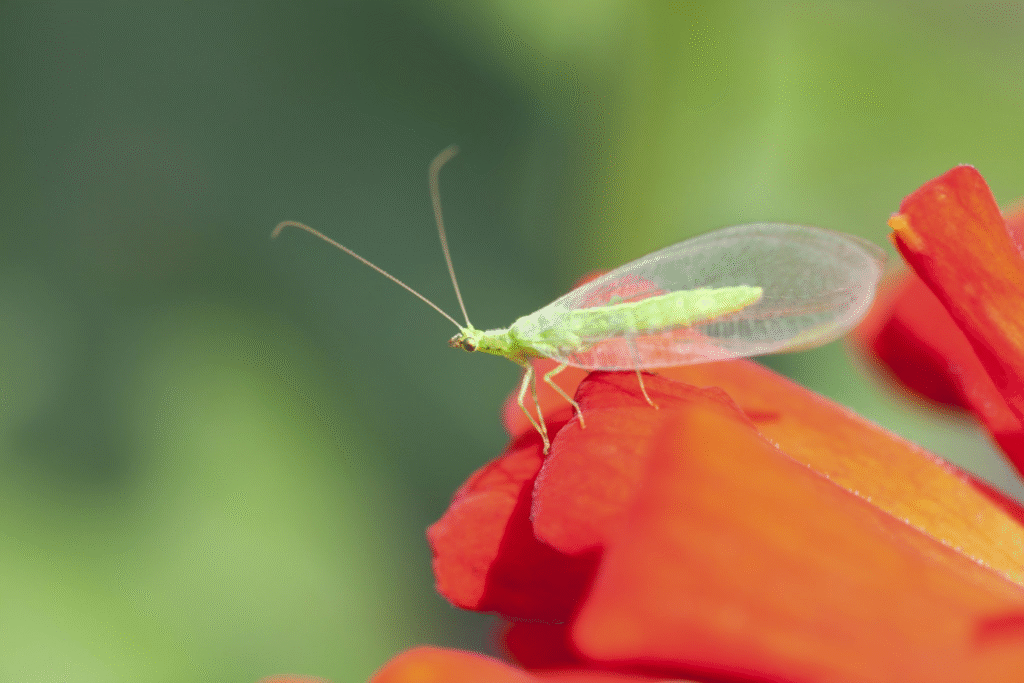
Common Mistakes to Avoid When Supporting Beneficial Insects
Even well-intentioned gardeners sometimes make choices that undermine their beneficial insect populations. Avoid these common pitfalls:
Expecting Immediate Results: Building beneficial insect populations takes time—often a full growing season or more. Be patient and persistent in your efforts.
Over-sanitizing the Garden: Excessive fall cleanup removes important overwintering habitat. Strike a balance between tidiness and ecological function.
Choosing the Wrong Plants: Heavily hybridized plants, especially those with double flowers, often provide less accessible nectar and pollen. Prioritize single-flowered varieties and native species when possible.
Misidentifying Insects: Many beneficial insects look threatening or resemble pests in certain life stages. Learn to identify the larvae of beneficial species to avoid accidentally removing them.
Releasing Non-Native Beneficials: While purchasing beneficial insects can help in emergency situations, focus on creating habitat that attracts and sustains native beneficial populations for long-term success.
The Future of Beneficial Insect Conservation
Beneficial insect populations face unprecedented challenges from habitat loss, climate change, and pesticide use. Your garden can contribute to wider conservation efforts that ensure these insects continue providing their valuable services.
Research from the U.S. Environmental Protection Agency indicates that urbanized areas could potentially support significant beneficial insect populations if just 10% of lawn areas were converted to diverse plantings. By making this change in your own yard, you’re contributing to a network of insect habitats spanning the country.
Consider participating in citizen science projects that monitor beneficial insect populations, such as the Great Sunflower Project or Bumble Bee Watch. These programs help researchers track population trends and develop more effective conservation strategies.
As you develop your garden as a beneficial insect sanctuary, share your knowledge with neighbors and friends. Community-wide adoption of beneficial insect gardening creates connected habitat corridors that support healthier, more resilient insect populations.
Conclusion: Your Role in the Beneficial Insect Ecosystem
By cultivating a garden that welcomes beneficial insects, you’re doing more than just controlling pests naturally—you’re participating in ecological restoration on a scale that matters. Your yard becomes a functioning part of the local ecosystem, contributing to biodiversity conservation and sustainable gardening practices.
The EPA’s Green Landscaping program emphasizes that homeowners collectively manage more land than all national parks combined, giving gardeners tremendous potential impact on beneficial insect conservation. Learn more about environmentally beneficial landscaping practices at the EPA’s Green Landscaping resources page.
As you implement the strategies outlined in this guide, remember that even small changes accumulate over time. Each flowering plant you add, each area of habitat you create, and each pesticide application you avoid contributes to a healthier environment for the beneficial insects that help your garden thrive.
By working with these natural allies instead of against them, you’ll not only create a more beautiful and productive garden but also contribute to the preservation of these essential creatures for generations to come. Your garden isn’t just a collection of plants—it’s a living ecosystem where you and beneficial insects work together toward shared success.
